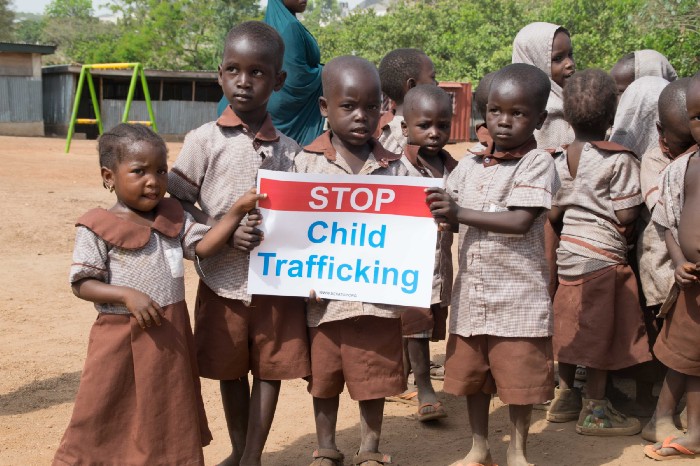THE AFRICAN CHILD By Samuel Chijioke Okorie

While labour migration has been of huge benefit, it has also constituted the exploitation of children known as Modern slavery. Human trafficking has given rise to lots of worries and attention in our modern society today constituting a major social problem and inflicting physical, emotional, psychological, sexual and social injury to the victims especially women and children. The prevalence of child abuse is high in developing or under developed third world countries where women and children are sold as modern salves to developed countries and affected victims often go through a lot of trauma and depression and even infected with STDs.
Africa continent is filled with so much respect for cultural heritage, norms, mores and folkways. The African traditional system is so rich that it beautifies the essence of love, oneness, and respect. Africa loved Africans as they always lived as one. This oneness was really intimate and they could give up anything just maintain it until one day. All this changed within split seconds due to selfish interest, and the African Child has been the victim of this circumstance. Faced many ups and downs to succeed, with several untold realities as oppose to how they were told in school as some of them were sold as modern slave known “Human trafficking”. Some were married out as early as 12years or even below, while some were sold into a marriage system known as “money woman” or betrothed from childhood known as “money marriage” all to meet up with the family’s social economic standard.
Children are deceived by pimps (perpetrators) on daily basis that they are going to be taken good care of and that their life will be stress free with good education. According to Bregeron (2010); Pimps mount on strategic locations like bus stations, parties, malls, movie places,
street, social gathering, religious centres, event centres, outside school etc. in bid to traffic young girls” as sex worker. These perpetrators even go extra mile to convince children to run away voluntarily from home in search of a greener pasture.
Nigeria, this has been seen and considered as a hustling ground for children and may die hustling. Many children are victims of the African the mind-set which was tampered with when she was termed a “dark Continent” and “a grave yard where great dreams are buried” while alive. This is because they are victim of RAPE which was demanded of them from a very tender age. They are seen on the street at a very tender age hawking around with blank vision about the future. According to Frances Cress Welsing, The Isis Papers, 1991″Children are the only future of any people. If the children’s lives are squandered, and if the children are not fully developed at whatever cost and sacrifice, the people will have consigned themselves to certain death”
Rape in this context is a misplaced potential or death; where a child sent to stay with her supposedly “Uncle/aunt” with the hope helping her, but end up making her more vulnerable prey for people to feast. This has been the story of many victim of human trafficking till date. Studies on the trafficking of women and children has shown to be a commercial sexual exploitation which has been a major indication for human trafficking today.
The African Child was raped the moment she was told in deception that life would be more meaningful when she leave home to stay with her unknown aunt/uncle that just show up one evening to take her to the city, that she will be a big girl when she get there. And there she was, wondering around and waiting for when the cock shall crawl for her to answer the call of her master/mistress who has sent her out to be bitten by mosquitoes. She is a victim of RAPE by her own family as a result of greed, making it quick syndrome, greener pastures, ignorance among other socio economic compelling factors.
Strict laws with capable agencies should be constituted and there is need to educate parents about the ware about of their children.
Note: This article is published as written by the writer. It was selected as the second among the three best articles of the TALKAM Human Rights Article Competition